#muninns post
Explore tagged Tumblr posts
Text
My raven ate my wallet. Why did I leave Munin in the car with my wallet on my seat? Good question. The bank had the same question. I had to explain that my credit card was not exactly stolen.... Awkward. Thank you for making my life interesting, Munin. I appreciate that.
(Munin is my African raven. She is cute-evil.)
#birds#ravens#crows#corvids#corvid#crow#huginn and muninn#munin#text post#wallet#credit cards#funny#lmao
36 notes
·
View notes
Text
𝔏𝔬𝔳𝔢 𝔦𝔰 𝔞𝔩𝔴𝔞𝔶𝔰 𝔪𝔢𝔰𝔰𝔞𝔤𝔦𝔫𝔤 𝔣𝔯𝔦𝔢𝔫𝔡𝔰 𝔬𝔫 𝔥𝔢𝔯 𝔭𝔥𝔬𝔫𝔢. ℭ𝔥𝔦𝔩𝔡𝔯𝔢𝔫 𝔱𝔥𝔢𝔰𝔢 𝔡𝔞𝔶𝔰 𝔧𝔲𝔰𝔱 𝔡𝔬 𝔫𝔬𝔱 𝔲𝔫𝔡𝔢𝔯𝔰𝔱𝔞𝔫𝔡 𝔱𝔥𝔢 𝔧𝔬𝔶𝔰 𝔬𝔣 𝔲𝔰𝔦𝔫𝔤 𝔯𝔞𝔳𝔢𝔫𝔰.
9 notes
·
View notes
Text
Rise August Art Challenge
-- Day 4: Yokai --
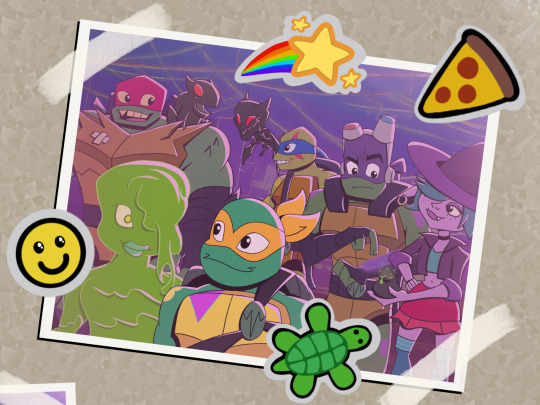
Day four of @sariphantom's Rise August Art Challenge! I imagine this is a photo that April took (and Mikey decorated) while hanging out with some Yokai friends down in the Hidden City.
Sunita is obviously good friends with April, and I bet she'd get along well with Mikey, too!
Donnie may still be banned from Witch Town, but Gentry (the girl April befriended in that episode) is bringing a little bit of Witch Town to him!
(April has a much better track record of befriending Yokai than the boys, doesn't she?)
Leo and Raph are talking to Huginn and Muninn... does anyone else wonder what happened to those guys? If the resume they gave Meat Sweats is any indication, their chances of being hired again as minions is, um... debatable.
I imagine Leo could warm up to them faster than he did with Draxum, given that they never seemed truly evil (and weren't present during the whole "throwing him off a roof" thing). Plus, they spent thirteen years with Draxum, so Leo could probably fish for some embarrassing stories that he'd use to annoy the poor guy later.
Rise August 2023 Masterpost
#rottmnt#rise of the tmnt#art#my art#rise august art challenge#day 4#yokai#my post#alt text#donnie#leo#mikey#raph#tmnt#teenage mutant ninja turtles#rise of the teenage mutant ninja turtles#gentry#save rottmnt#sunita#huginn and muninn#huginn#muninn#leonardo hamato#donatello hamato#raphael hamato#michelangelo hamato#rise donnie#rise leo#rise mikey#rise raph
135 notes
·
View notes
Text
I have gotten an idea for a Rottmnt Au where Mikey is raised by Draxum, but instead of being trained to be Baron's soldier he recognises the social skills and compassion our turtle has
So Mikey kinda becomes a face man/spokesman for his cause
It probably has been already done and I don't have a strong concept yet but I still want to draw at least a small one-page comic or sth
The problem is that Mikey is the only turtle I have trouble drawing xD
So now I'll be spending most of my time trying to learn to draw our guy
Also I think that Michelangelo wouldn't have mystic powers in this AU (at lest not at the start) as he doesn't have that connection with his brothers
(He believes they died when a human named Lou Jitsu destroyed the lab)
#rottmnt#rottmntau#i forgot you can make text-only posts on tumblr#even though I read them all the time#here and on Pinterest#especialy the turtle ones from#turtleblogatlast#also I think Huginn and Muninn#would have had a big part in raising Mikey#as Draxum would be busy repairing his lab etc#and I don't know what else to write#so pretend this monologue makes more sense
10 notes
·
View notes
Text
Back in this poll I did, Wall of Handprints and gargoyle lore tied for an infodump. The Wall of Handprints info is here (it's basically a communal art piece in the Hidden City that's been continued for several centuries), now on to the gargoyle lore. (Gonna be completely honest, I forgot which of the seven different phone documents I use for writing fic stuff I originally wrote this in, so it took a while to find.)
Huginn and Muninn's species (which I've named pygmy gargoyles due to the fact that all other gargoyles we see are HUGE compared to them) live in large groups, called warrens or hives, usually anywhere between 50-200 members. As a species they reproduce asexually, basically through enchanting rocks to create a sentient lifeform, not unlike a homunculus. In fact, certain parts of the scientific community argue that pygmy gargoyles should be considered homunculi, but since classification as homunculi would seriously mess up their legal status as something of an independent colony not directly governed by the Council of Heads, most pygmy gargoyles don't like the term.
Doing the enchantments to create new gargoyles is actually a very intensive and complicated process, usually involving the whole warren, because enchanting rocks to bring them to life takes a lot of mystic energy (and since gargoyles are maintained as living beings purely through mystic energy, they don't have much to spare). They tend to do these enchantments in batches for the sake of energy efficiency, so the vast majority of gargoyles are automatically born with same age peers that they call hatchmates. Usually these groups are of about 4-7 new goyles at once, but they occasionally are larger for warrens that do the enchantments less frequently (usually ones that have a larger population).
After the goyles are 'born', a small handful of adults will take responsibility for raising them (this is determined before the enchantment is started so that only gargoyles interested in becoming parents will become parents). You have easily three to six direct caretakers--parents--and the rest of the community steps in as needed, something like uncles/aunts, grandparents, or cousins. Gargoyles are not born able to fly, and not all of them develop that ability. For the most part, though, it's a marker of development similar to puberty that they develop around their adolescent years. As a result, gargoyle children are most often called walklings, then flightlings as they start learning how to fly and gradually get better at it.
Pygmy gargoyles, as a rule, address the adults most involved in their upbringing with parental terms, and other less involved adults with familial terms. However, the exact titles are up to the individual kids. One might call someone 'Mama' and one of their hatch mates might call that same person 'Aunt'. Also, it's not uncommon for a kid to switch the terms the use for a given caretaker, so someone might be "Dad" one day, and "Uncle" another. Again, there's no biological connection, so the exact title isn't super important, but more or less indicates a level of closeness.
When gargoyles reach adulthood, they have a coming-of-age ceremony where they pick a new name for themselves. Hatchmates do not always have this ceremony together, as 'adulthood' is defined fairly nebulously based on several factors (flying strength/skill, educational level, social skills, etc), and in fact it's more common for them to have individual ceremonies over the course of several months or years. This ceremony is usually attended by a gargoyle's parents, hatchmates, and close friends. Huginn and Muninn had theirs together, so they picked matching names.
Some random facts: as inorganic beings, gargoyles don't have all the needs as organic ones. Yes, they can eat, but they don't need to. They also aren't capable of truly sleeping; it's more like napping, zoning out, or purposely ignoring the world around them. Most of them have a very good sense of direction (usually as a result of some magnetic material like magnetite or hematite being included during their creation). Also, they do have their own flight-based language, but this post is already massive so I won't go into that right now.
#rottmnt#rottmnt au#rottmnt headcanons#minor interference au#minor interference lore#rottmnt fanfiction#rise of the tmnt#rise of the teenage mutant ninja turtles#i love writing up a lore post and going 'wow this is barely scratching the surface' lmao#i'm so normal about worldbuilding you guys (wrote massive post about the completely invented cultural background of two minor characters)#fun fact i also have a separated au somewhere that draws heavily on all my gargoyle lore#because one of the turtles gets raised in huginn and muninn's warren (an organic being raised by very much inorganic ones is very fun)#but like. the au low key doesn't make sense without all the lore (and this isn't even all the lore)#anyway i love writing a 700 word post and then rambling in the tags lol
28 notes
·
View notes
Text
Look at this weird bird
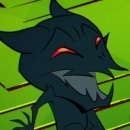
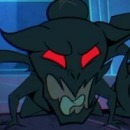
4 notes
·
View notes
Note
To Helg, how would you react to meeting your alternate universe brother (he's somehow a seal and has a son-)

"Well, Heimdall will always be my brother no matter if he's from another universe. I'd love to meet him! If he has a son I wonder if he would get along with my own-"

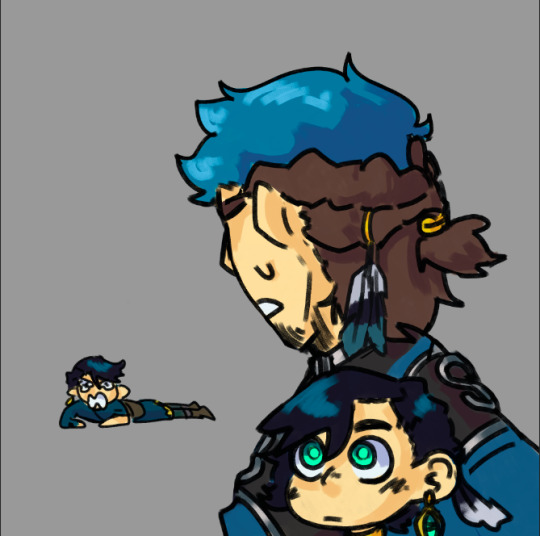
"....Hugin you okay buddy?"
#okay i can update my posts again ;w;#sorry for this trainwreck snoddie#thank you for your aaaask#i m sorry it took so long so you get a bit of Helg lore <3#oc#ask Helg#helg odinson#huginn and muninn#digital art#the newby art#gow ragnarok oc#gow oc#art
4 notes
·
View notes
Text
Therianthropy Day is Friday, November 15, 2024
Therianthropy Day is held every year on the first full moon of November. This year, in 2024, that falls on Friday the 15th. According to NASA, this also happens to be a supermoon, which means it’s slightly brighter than usual.
Why that date, and what is the history of that holiday?
Therianthropy Day commemorates the first Howl, which was held 30 years ago in November 1994. A Howl is when therians meet up together in person. That was a year after the first therians started to meet up together online in November 1993. Therians first proposed commemorating it as a holiday on that date in 1996, in a conversation thread you can still see here. Based on that history, in 2016, Muninn the Raven proposed observing it as Therianthropy Day, though the first posts and community poll about it attracted little attention. I think the holiday finally really caught on in 2021, when I first saw many therians posting on social media about fun things they were doing for it.
What are therians, anyway?
If therianthropy is a new idea to you, or you want to explain it to others who are unfamiliar with it, this essay is a quick and easy to understand introduction to it. It’s available in several languages already, and more translations would be great.
Learn more about the history of the therian community by reading the Timeline of the Therian Community written by @liongoatsnake
What can we do for Therianthropy Day?
I’ve seen therians celebrate it by wearing gear (for example, a necklace with the therian symbol, or clothes with pictures of their species), meeting up with their therian friends, and howling at the moon.
Enjoy some indie games and zines about therianthropy from this hand-curated itch.io collection. Some therian highlights from that: SlumberDragon’s zine of self-care tips for animal folk, @who-is-page’s therianthropy-inspired solo journaling game Wolf In Man’s Clothing, puppygirlbelly’s interactive story I Am Dog(s), and Digital Freegans’s zines THERIANARCHY and BEAST PUNKS.
Are there days for other sorts of alterhumans too?
There are. Alterhuman Day commemorates when Lio of the Crossroads System coined that word on September 26, 2014. Otherkin Day is on July 9, commemorating when the word was coined in 1990, though Arethinn has found that the word’s origin is a little more complicated than that. Plural Events says that Plural Pride Day is the third Saturday of July, and Plural Acceptance Week is that week.
#therian#therianthrope#therianthropy#therianthropy day#rated G#screen reader friendly#therianthropy per se
407 notes
·
View notes
Text
Introduction post!
I am -a- corvid detector!(There are others too!)
I do this because I have corvids as pets, corvids in the garden, and I am one silly bastard :D


I'm like 20 ish of a dude but that doesn't quite matter as I neither behave that way nor do I fashion anything particularly

Neat things about me:
-I've created a cloak out of roughly 8000~ raven/crow feathers
-yes, it's part of a 3½ m high grim reaper costume with a scythe I've poured out of metal myself that I drag across the floor as I walk the streets on Halloween, literally making people close their windows because this is a rural town and honestly -f--k that- if it walked across my street
-I have two crows called Huginn and Muninn and I do so because I can
-Yes, I've taught them to sit on my shoulder
-Yes, I am weird and I like it
-Yes, when I say I am a bastard, I am joking, I just like being called that, for some reason
-My favourite colour is a colour that is the lack of colour!
-yes, I play a great amount of videogames
-irl I am built like a truck
-i sometimes identify other things as well, because it is fun, especially mutuals, so if you get a picture identifying what you are, you can know that it was made for you specifically
This sums it up, unless I have anything else to add in the future, then I'ma slap it in the comments
Love of all of ya, but corvids more~
Byeeee

173 notes
·
View notes
Text
Alright folks. Here it is, my theory of what Ragnarok actually represents. It is very messy and I'm not sure I'm going to be able to actually convey my understanding clearly like I try with most things, because genuinely this is shit I would write a doctorate-level thesis on.
But we're going to try anyway.
So. After doing a lot to try to replicate animistic thinking, as well as taking a VERY deep read of the Norse myths, my theory is that Ragnarok is specifically allegory for societal collapse—the "end of the world" imagery and such is meant to convey what this feels like.
Recall what Odin says in Grimnismal. It goes something like this, since I can't be arsed to find the exact quote:
Huginn and Muninn fly over the world every day; while I fear Huginn ("thought") may not return, I fear Muninn's ("memory's") absence most.
When a society collapses, so does it's memory. It loses its technology, its methodologies, its paradigms, and everything it has learned about the world up to that point. Gone. Entire chapters of history erased.
What causes societal collapse is not always a conquering force, but is oftentimes the result of circumstances that a society orchestrates for itself. Think Rome.
People who have gone through societal collapse will probably develop an invested interest in figuring out how to prevent it entirely, so they don't have to start society all over again.
It's one thing to preserve the memory of "things collapsed and here's why" using a story. But it's another thing to do what apparently the Norse people did, which is cultivate a methodology for cognitively hardening their own society against collapse, using stories as a way to do it.
Like...I'm not kidding when I say they legitimately knew how the human mind works, and then built an entire system of stories and narratives that intentionally support the mind's freedom, cultivation, and agency. I can only convey a fraction of how this works in this post because the rest requires a deep-dive into behavioral psychology and neurological development.
All the tales leading to Ragnarok demonstrate various instances where the gods choose to follow their own agendas at the expense of the real people and forces in the world. All of these little things contribute to the magnitude of the event that is Ragnarok.
The tales represent these transgressions using allegories rather than literal events. This is because these stories were designed for children, who don't process information through a prefrontal cortex like we do as adults. They don't have them yet. But this gives kids an intuitive understanding for how circumstances of collapse feel, so they can recognize them in all their forms.
Loki is an allegory for the mischief we feel as children, and for the behaviors we demonstrate before we get to the age where we start valuing cooperation. In the myths, every time Loki causes mischief in ways that creates problems, the gods get mad at him and threaten Loki's life until he fixes his mess. Loki eventually becomes vindictive, kills Baldr in a jealous fit, and then is punished by being bound and buried beneath the ground, only to fight against the gods in Ragnarok.
The surface-level takeaway is a lesson in parenting: If we punish kids for their mischief, they're going to become vindictive adults, and these adults are going to have it out for the rest of society because they've been disenfranchised.
But it doesn't just end here. Consider how we punish ourselves for our own sense of mischief, beating ourselves up for having "problematic" thoughts and trying to bind and bury those thoughts in the depths of our mind.
These thoughts come from a place our mind known as the limbic system, which is focused on avoiding pain and seeking pleasure, and—most importantly—does not understand the world or make decisions using logic and reason, but in terms of what feels enjoyable and what doesn't.
We tend to call this system our inner child.
When we punish our inner child, that child starts doing exactly what Loki does and resorts to malicious and petty tricks. We can hold this behavior at bay until something causes us to "snap" (like Jörmungandr's tail does) and out comes the malice of the disenfranchised inner child, which creates a terrible cascade of social consequences for us.
Now, if we were to listen to these stories as kids, we would naturally be very upset whenever Loki was threatened of punished, because we think out of the limbic system at that age and Loki is meant to represent us—specifically, the state of being a kid. We would see what comes to pass, with Loki being imprisoned and fighting the gods against Ragnarok, and it would become clear to us that there's consequences for punishing mischief AND also causing too much of it.
Now I don't know about you, but I was very motivated by a sense of justice as a kid. Hearing Loki's arc would have inspired me to learn how to be friends with my sense of mischief while also learning to use it in ways that were cooperative and social, because this would have been how I could right the wrong I felt was done to Loki. It would also mean my own limbic system will not fight against me in the future, but be a modality of thought I can always access. (This is the beauty of the way the Norse myths are crafted; they are designed to instill knowledge of the world using mechanisms that reinforce one's own sense of agency and competency, so rather than being told the moral of this tale, it sets me up to run right into the conclusion it wants me to draw, but in a way that makes me feel smart and therefore inspires me to value it.)
The binding of Fenrir serves a similar allegory. When we become explosively angry in the way that Fenrir represents, it consumes our wisemind the same way Fenrir consumes Odin during Ragnarok. But this only happens if we bind Fenrir/our anger. By demonizing this nature of ours simply for existing, it will not only refuse to listen to us, but also turn against us. Remember that Fenrir was willing to socialize and cooperate with the gods before his betrayal.
(Honestly, I believe this is why ulfheiðnar existed the way they did. Even though the animalistic rage of ulfheiðnar was too terrible for domestic society, it was not demonized, but instead given a social function. People would learn to understand and partner with their own sense of rage, and I'm guessing this is also how they were able to keep their sense of reason and priorities straight even while going berserk from psychoactives.)
These two examples serve to illustrate how societal collapse stems from binding or punishing our own natures. But also fearing our own nature as mortals factors into it.
For example, Naglfar. This is a ship constructed of dead people's fingernails, and its completion is part of what signals the beginning of Ragnarok. But as the story goes, we can delay Naglfar's construction by trimming the nails of the dead before we bury them.
Naglfar represents "neglect for the dead," and this is significant because the act of no longer viewing the dead as people is sort of like the canary in the coal mine for no longer view each other as people...and no longer seeing people as people is what defines Ragnarok.
A society is at peace when its people have no fear of death, and having no fear of death comes only by incorporating death as a normal and familiar part of life, just like we do with birth. Our relationship with death is a litmus test for our relationship with our own humanity—if we fear the dead and cannot see them as human beings, then we are always going to fear a part of our own humanity, and be at war with it. The simple act of keeping the nails of the dead well-groomed because it stalls Naglfar's construction was a way to remind people why such a simple act was profoundly important.
And these are just the things that I can think of off the top of my head that are the most obvious examples. There are—and I shit you not—multitudes of these things laced within the Norse myths.
(I haven't even gotten to the part about how the Norse creation myth uses what the womb feels like to characterize it. Telling this story to very little children helps them establish a sense of familiarity, belonging, and secure attachment with the entire world from the get-go. If they learn the world is everything they've already experienced, then their bodies will never be afraid of it, because nothing about it will feel unknown or unknowable. Like, how fucking dope can you get.)
So here's where we get to the really dense irony of all this: Why we don't pick up on all these nuances as Westerners and have so far missed this entirely.
It is for two reasons.
The first is because our society values the things that the Norse people identified as contributing to societal collapse—namely, the act of conquering/competing against other forces and conquering/competing against our own natures. The transgressions of the Aesir are not things we register as problematic because to us they're normal.
The second is that we don't think animistically. The way we are taught to convey, interpret, and transmit information is designed PURELY by and for the prefrontal cortex, with neglect to everything else (if you ever wonder why Americans look weird in how we behave, this is why). But because we only prioritize communicating this way, we're missing out on all the context added within the Norse myths. These myths function the same way Old Norse kennings did, in that they are designed to speak to ALL areas of the brain at once and in tandem, but if we only engage with it using one part of the brain, we're only going to get a small piece of the picture and the rest is going to look weird.
(Little experiment for you: Try to logic something out in your mind or think through a complex problem without using words or sentences to do it. Use any other kind of thought-process besides language. I promise you that not only is this possible, but it yields a completely different kind of experience and conclusion than you might otherwise reach.)
Honestly, I don't even think Snorri himself fully understood what he was looking at when he was recording the Norse myths. I think he was just writing them down according to how they were told, word-for-word. But his cluelessness is our good fortune now, because he not only preserved the cultural stories, but also what I consider an entire cognitive technology.
And every time I look at it, I can't help but think about the generations of people who sat around the fire in the dead of winter, weaving, crafting, and figuring out better ways to fortify their society, raise kids so they became fine and truly fearless people, and conserve information. This is, as far as I'm concerned, real magic.
They knew some shit.
566 notes
·
View notes
Text
Hugin and Munin are cute...
I woke up early this morning, was trying to get back to sleep, and heard Hugin and Munin making sweet little noises to each other in the dawn. It was very comforting. For once, I didn't mind how long it took to get back to sleep. It is so nice listening to other people when they are happy.
(Hugin and Munin are my African ravens. They are not helping me sleep, but that's OK.)
19 notes
·
View notes
Text
Love keeps asking me for a phone. I am worried she is too young, but I also do not know what is wrong with the ravens.
12 notes
·
View notes
Text
Rise Characterizations Pt. 8!!!!!!!!
This has literally been sitting in my drafts for so long I forgot it existed. Sorry to all the Baron Draxum fans (and Draxum himself, bbgirl deserves better). If you're new to my line of notes here's the beginning where I started with Raph. Alright part 8, Baron Draxum, here we go.

Language Habits:
Speaks in long and drawn out sentences, if you're getting nervous about run-on sentences you're on the right track
Due to this, tends to give speeches or monologues
Dramatizes everything fairly eloquently, look for the most exaggerated form of a word. Classic villain speak: "imbeciles", "brethren", "eliminate"
Puts emphasis on those dramatic adjectives and verbs
Occasionally refers to himself in the third person, not as often as Raph
Tends to yell or raise his voice when frustrated or lost in passion
A common gag is trailing off in a casual tone about the severity of his experiments ie his "if it works right" about the ooze causing pain when mutating that poor fish guy

Personality:
Incredibly intelligent yet impatient. It isn't known to my knowledge who taught Draxum or if he taught himself, but his mastery of alchemy and fighting makes him a truly impressive opponent. However, he's always cutting corners to get to his goal. He wasn't willing to raise through the ranks of The Foot the traditional way, he created an army of mutants rather than seek yokai, and was unwilling to spend further time interpreting the prophecy of doom towards yokai-kind
Flair for the (over)dramatic. Draxum is almost your classic evil villain kind of guy. He'll pull out all musical stops, including flowing hair and clothes. On the other end he'll completely overreact and commit to things of little matter like his position as a lunch lady.
Unyielding in his stubbornness. Draxum is not easily swayed in his belief, and even as hard as Mikey tries he is not rid of his disdain for humans by the end of the series. Guy was also incredibly persistent in his research despite his lab blowing up twice. This also allows him to hold longer grudges, even resorting to childish pettiness if he feels annoyed enough.
Affinity for muscles and power. He was drawn to Lou Jitsu for many reasons, but a main one was definitely his muscles. All his guards are usually incredibly beefy, and he was immediately drawn to Raph as "beautiful" when he's reintroduced to his specimens. As for power, he's drawn to the dark armor and is lost in the ecstasy of being imbued with so much mystic energy.
Self-absorbed and egotistical. Draxum is kind of obsessed with his title and self-proclaimed responsibility for saving yokai-kind. He's not one to easily admit his mistakes and takes great pride in his work.
Willing to toe the line of morality. Huginn and Muninn have blatantly called him their evil boss, but Draxum does see his actions for the good of yokai-kind. I don't think he really cares if he's working with evil organizations (The Foot) or doing evil things if he saves the day.
Team builder. I think it's interesting how Draxum is drawn to building teams. He's drawn to working together, all he wants to do is unite yokai and his mutants into an efficient force. This does not mean he's very successful.

Miscellaneous:
Has minor telekinesis
Was a warrior before he was an alchemist
Does not have a good relationship with the Three Heads (apparent leaders of the Hidden City)
Controls seeds that can a) grow into vines, b) expand into robotic vine gauntlets, c) encase his gauntlets into meatier gauntlets that can shoot out waxy cocoons
Is referred to as a sheep-man from the brothers, but I suppose whatever animal you interpret him as is up to you
Has a great singing voice :) ( which is subjective I suppose)
Alright now that is finally posted just gonna let you know that this Isn't the last of my rise analysis posts!! I'm so sorry for the wait!! I got lost in so many schedule things. I'll try and pump a few more analysis posts out within these next few weeks (excluding June 16-22), but I've also been busy working on miscellaneous wips. Thank you for being so sweet to me on all the other notes posts, you guys are so awesome :)
#save rise of the tmnt#rise of the teenage mutant ninja turtles#rise of the tmnt#rottmnt#tmnt#teenage mutant ninja turtles#fanfic#character analysis#baron draxum#baron draxum rottmnt#critter talks
246 notes
·
View notes
Text
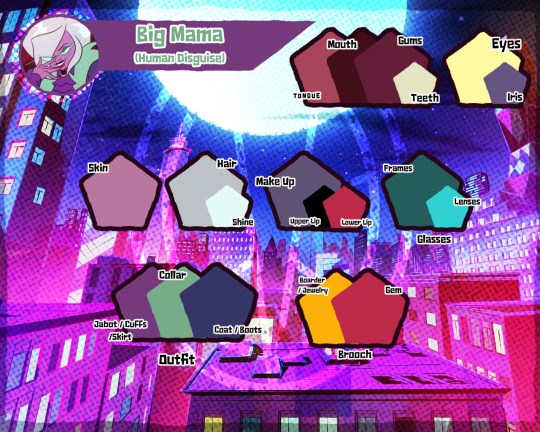


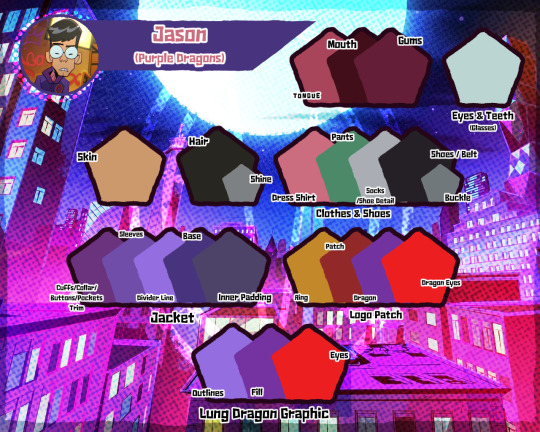

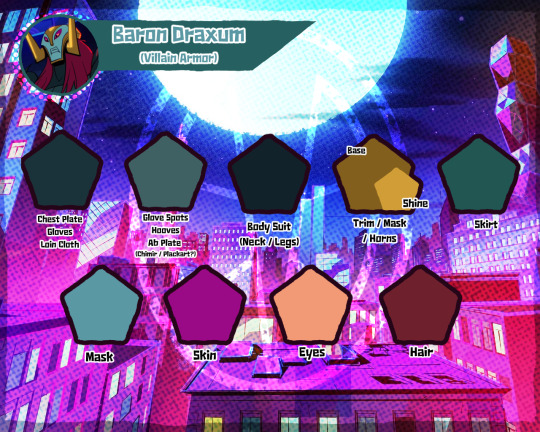

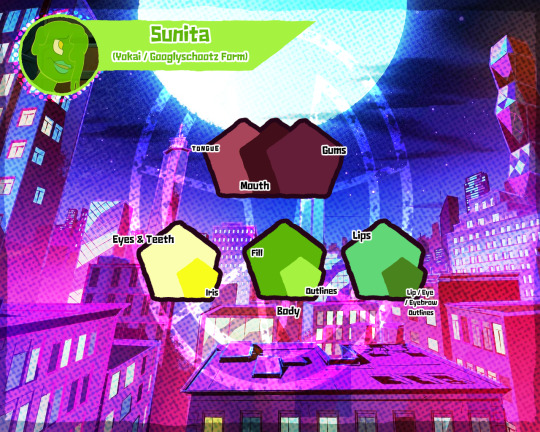

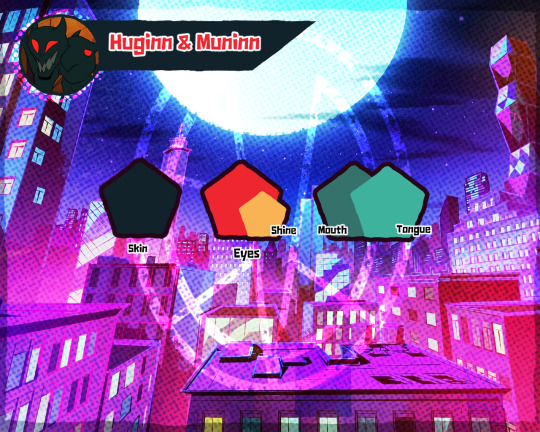
Hamato Clan Pallets | So, part 2 of my project I started because I noticed a number of the colors from @pluvionpc's color pallets were Season 1 exclusives, or were tinted by the scene color overlay and thus not the true bases. (No offense to you man, you did what you could and without them, this wouldn't exist) The purple dragons were surprisingly hard to get colors for, because they only appear, in light / neutral lighting, in 1 episode of the 3 they appear in, either dark in the next or on a screen. That and I kept fucking up the pallets with errors, can ask those in @elliwoods Bean Server... There was screaming and crying into 2 AM as I live-blogged spotting the errors, after dropping it there like... 6 fuckin' times and dying each time I saw a new one. /rage.
I maaaay have psyched myself out a bit on Big Mama's spider form pallet because I thought it was going to be painful... It wasn't, It was easy, and the fastest, I got it done in less than an hour.
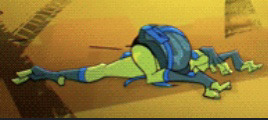
Also, fun fact, Big Mama's Spider form is one of the few whose mouth gets colored in black. She also seems to have 2 web colors, that purple, and the silvery purple that is her human form's hair color.
Sunita was also pretty easy, as she's one of the few characters that have had their turn around posted, that I could pull base colors from, even from her Googlyschootz sheet, which has the opacity effect (I think it is around 80% or 90%)
On that note, Sunita still has the default mouth colors, but they're layered on top of her green color + opacity lowered.
Fun fact: Sunita inadvertently confirms that while 'Yokai' is the general term for all the "mythical's" (IE: Like ''Humans") in the world, they all do have individual names, IE: She and her dad are Googlyschootz. (Also the fact I had to go to the transcript to get her race name, instead of it being listed under trivia on her wiki page, greatly irritates me.)
Drax's villain armor was... Easier than I thought, I kept procrastinating on it because I thought it would end me out of frustration and it would end up being bigger than it was... Though it is clear his design had a few color changes before the show aired by all early art being all colored differently.
I also didn't do Huginn and Muninn with Drax's as I gave Mayhem is own, might as well give the two their own pallet too.
———————————– My Commissions | .Carrd | Ko-Fi
#rottmnt#rise of the teenage mutant ninja turtles#rise of the tmnt#purple dragons#rottmnt kendra#rottmnt big mama#Big Mama#rottmnt purple dragons#rottmnt jason#rottmnt jeremy#resource#Jason#Kendra#Jeremy#Art
243 notes
·
View notes
Text
PALI ART SPOTTED!
youtube
New content drop, AND new series! Birds of Valhalla!
#new series!#ive been sitting on these boys for almost a year now#im so happy theyre finally able to be posted#good boy audios#goodboyaudios#gba birds of valhalla#gba huginn#gba muninn#gba draugr
92 notes
·
View notes
Text

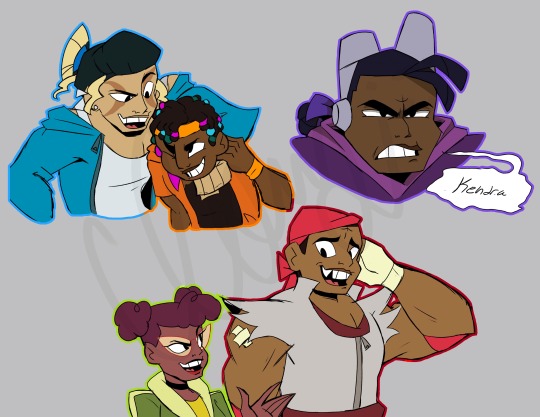
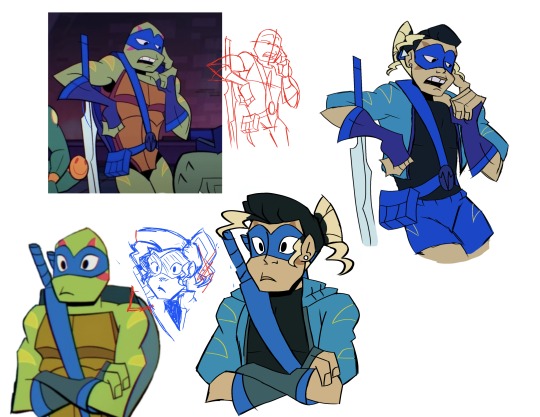
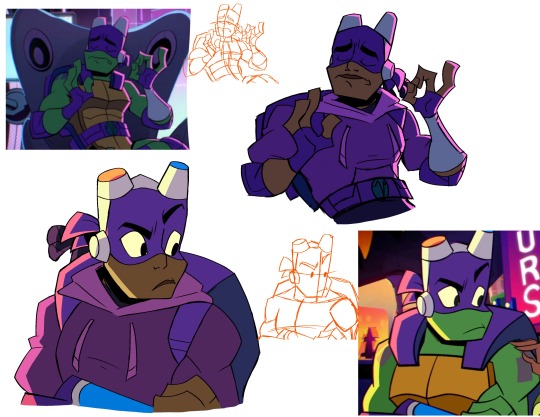

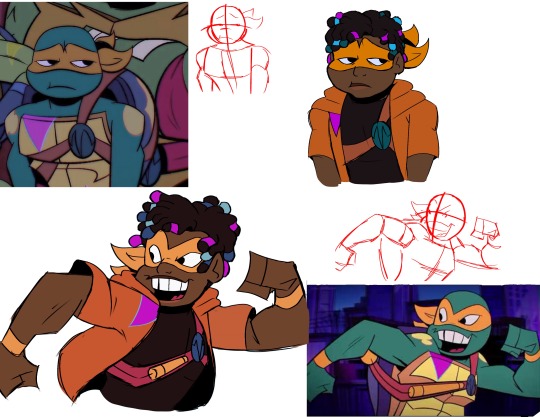
Rise Human AU!
I’ve seen so many adaptations of this concept, which I love and heavily depended on for these designs. I’m still working on their later ninpo designs but for now enjoy their hero outfits and civilian outfits
This is based on a human AU story I’m developing, not sure how far I’ll actually go with it, but here is the basic crack concept:
Everyone’s a human, no yokai, except Huginn and Muninn cuz imagining them as humans is too cursed. But story goes relatively the same - Lou Jitsu is captured by Baron Draxum but this time around the superstar just chills out at Draxum’s place to avoid BM. Then they start up a romance (of which I cannot take seriously) and Draxum’s uses their dna to make Raph, Donnie, Leo, and Mikey. And only after Mikey, which is 3 yrs into their relationship, does he reveal they are super soldiers who they’ll raise to help him in his plans to overthrow the world governments and becoming supreme ruler in order to maintain complete control after finding a dark prophecy of a great threat towards humanity
Splinter books it, settles down as a single Dad of 4, and I’ll get into more details later. Sorry for the ramble
I’ll post more about it and the idea I got, but know it is very Mob Psycho and Spider-Man inspired. Hope you enjoy
#tmnt#tmnt art#art#tmnt fanart#artwork#rise of the teenage mutant ninja turtles#teenage mutant ninja turtles#teenage mutant ninja turtles fanart#rotmnt fanart#rise of the tmnt#rotmnt human au#rotmnt mikey#rotmnt donnie#rotmnt leo#rotmnt raph#tmnt2018#rottmnt fanart#rise tmnt#rotmnt human#human rotmnt#human tmnt
80 notes
·
View notes